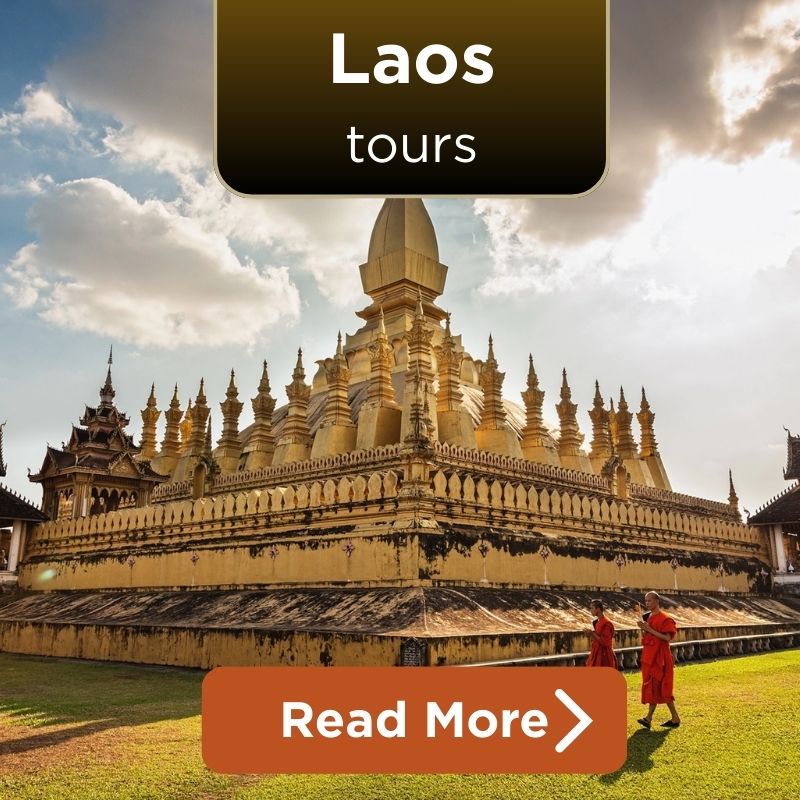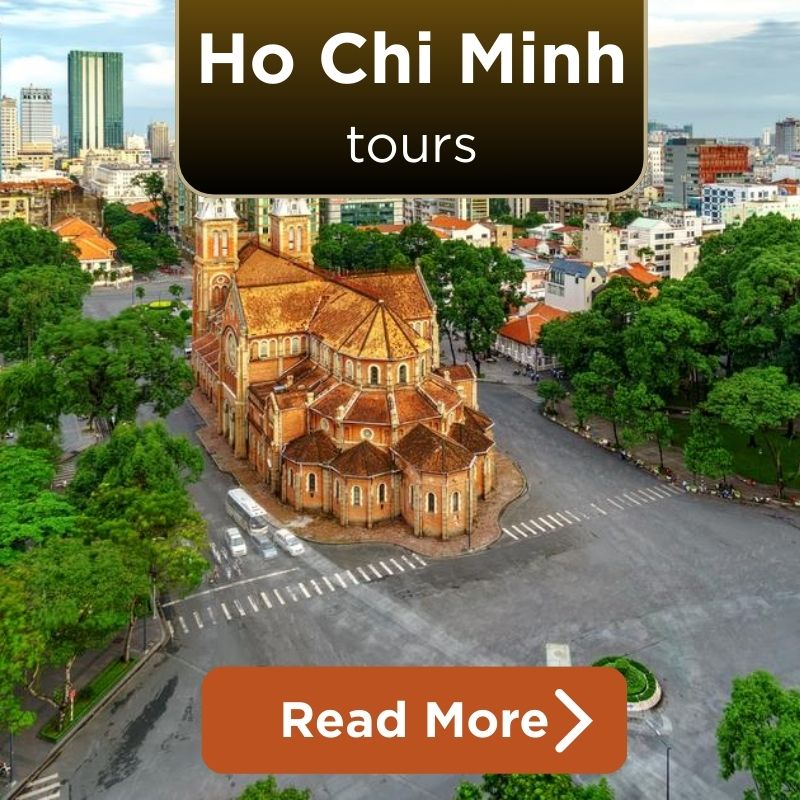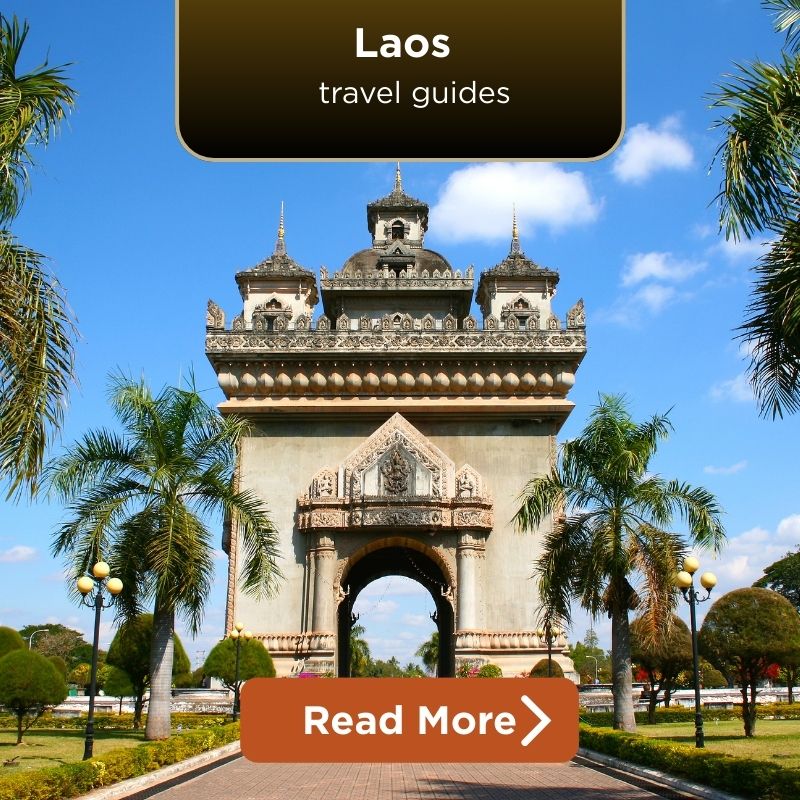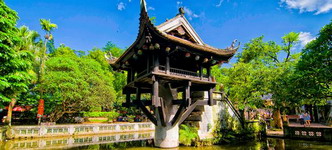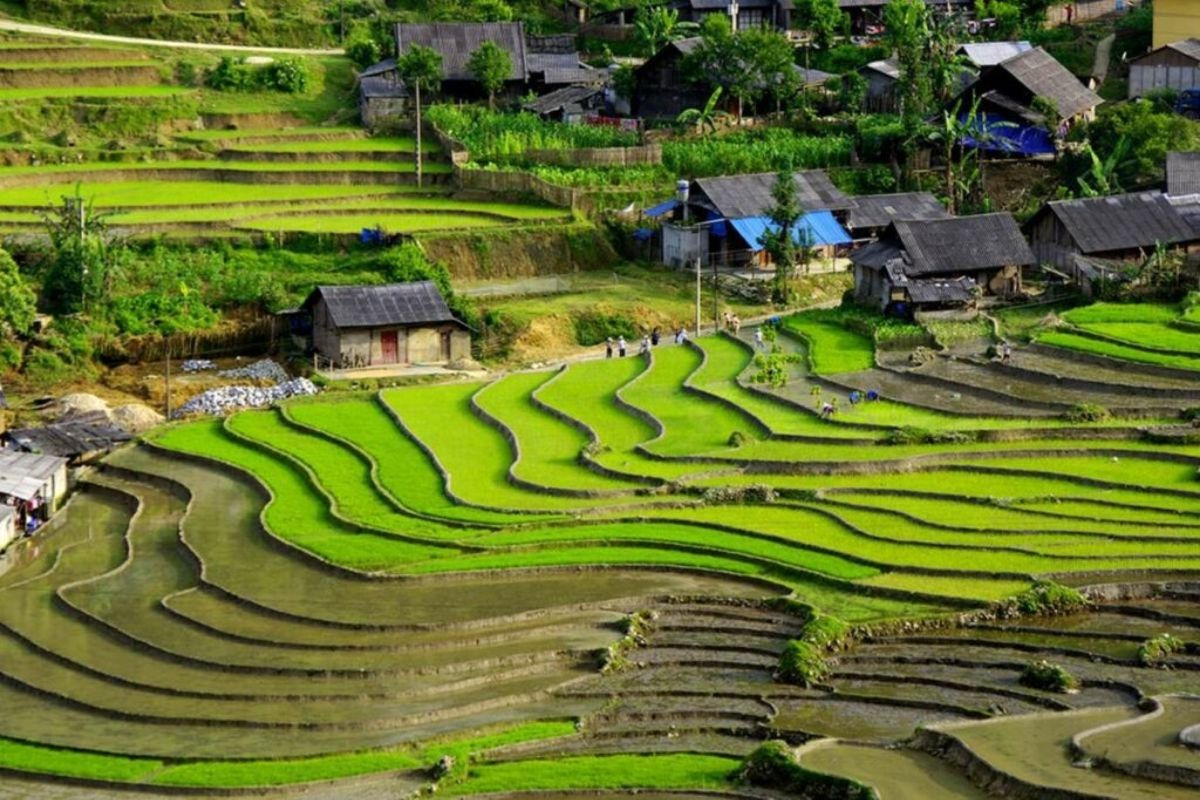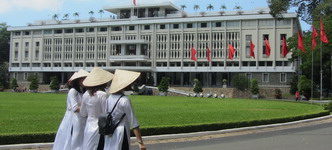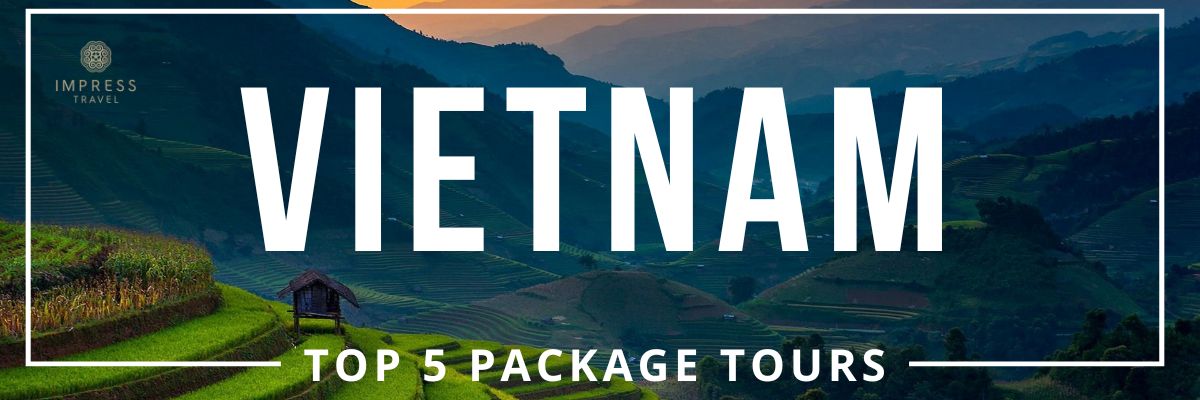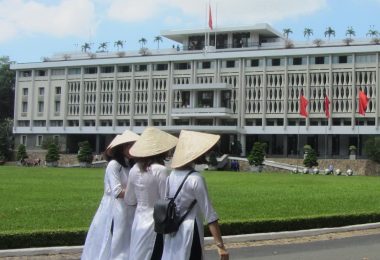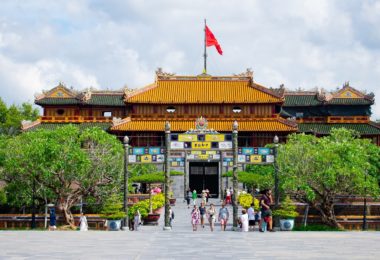Southern Vietnam Food Culture: What Makes It So Crave-Worthy?
Southern Vietnam Food is about what you do – how individuals live, party, and bond. What makes this food so memorable?
First is the combination of cultures. Southern Vietnam has historically been populated by Khmer, Chinese, Cham, and Vietnamese communities. Their influences have shaped the flavors of dishes like sui cao (Chinese dumplings), banh xeo (crispy pancakes), or bun ken (coconut fish noodles).
Secondly, ingredients for Southern Vietnam dishes are fresh and lively. Rice, coconut milk, river fish, tropical spices, and lots of vegetables are used by the people. These yield dishes that are sweet, salty, sour, and spicy – just the right amount of everything.
Thirdly, food brings people together. From Saigon street food to rural area dinners, people eat out of shared dishes in daily life. In food in Tet Southern Vietnam, people create special foods like banh tet and thit kho trung to welcome the new year happily and successfully.
Last, food is everywhere – on the street, in floating markets, at home. Cơm tấm in morning markets, lau mam in home meals, and banh trang tron in schoolyards. This is what gives Southern Vietnam food culture its vibrancy and delight to learn.
Top 15 Southern Vietnam Dishes You Must Try
1. Com Tam (Broken Rice with Grilled Pork)
Description: Com tam is Saigon’s symbolic breakfast dish. What started as a broken rice grain dish has become a Southern Vietnam Food favorite. It’s served with grilled pork chops, shredded pork skin, a slice of steamed egg meatloaf, and a sprinkle of sweet-and-sour fish sauce and is the perfect combination of texture and taste.
Region of Origin: Ho Chi Minh City (Saigon)
Key Ingredients: Pork chop, egg loaf, broken rice, pickled vegetables, fish sauce, scallion oil
Where to Eat:
- Com Tam Ba Ghien – 84 Dang Van Ngu, Phu Nhuan District, Ho Chi Minh City
- Com Tam Cali – Chain restaurants across Districts 1, 3, and 10
- Com Tam Kieu Giang – 347 Nguyen Trai, District 1, Ho Chi Minh City
Cultural Note: What was once a humble blue-collar meal has become an icon of Saigon’s daily life and the open, welcoming spirit of Southern Vietnamese food culture – simple, delicious, and wholesome.
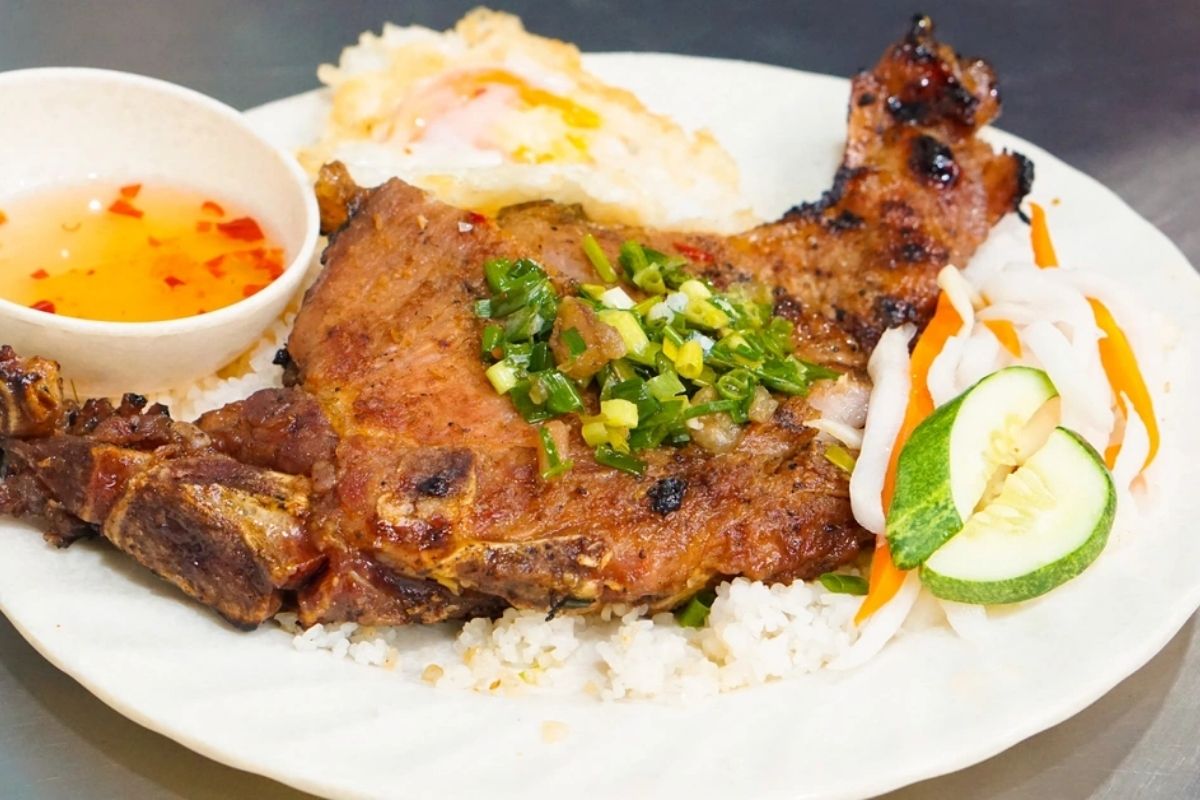
Com Tam Ba Ghien (Source: tuoitre)
2. Banh Xeo (Savory Crispy Pancake)
Description: Crispy-fried, fried yellow pancake, banh xeo is a staple dish of the Southern Vietnam Food tour. The batter is made with turmeric, coconut milk, and rice flour, filled with bean sprouts, shrimp, and pork. Wrap it in fresh herbs and rice paper, dip it in sweet fish sauce, and bite into crunchy herb-filled bliss.
Region of Origin: Southern provinces such as Can Tho, Tra Vinh, and Vung Tau
Key Ingredients: Rice flour, turmeric, coconut milk, shrimp, pork, bean sprouts, herbs, dipping sauce
Where to Eat:
- Banh Xeo 46A Dinh Cong Trang – District 1, Ho Chi Minh City
- Banh Xeo Muoi Xiem – A popular local chain
- Co Ut Banh Xeo – 52 Tran Quoc Toan, Ninh Kieu, Can Tho
- Banh Xeo Ba Hai – Ward 4, Vung Tau City
Cultural Note: So-called because of the “sizzle" the dish emits when it is being cooked, Banh xeo is another reflection of the relaxed, communal spirit of Southern Vietnamese cuisine, where food is to be wrapped, dipped, and shared.
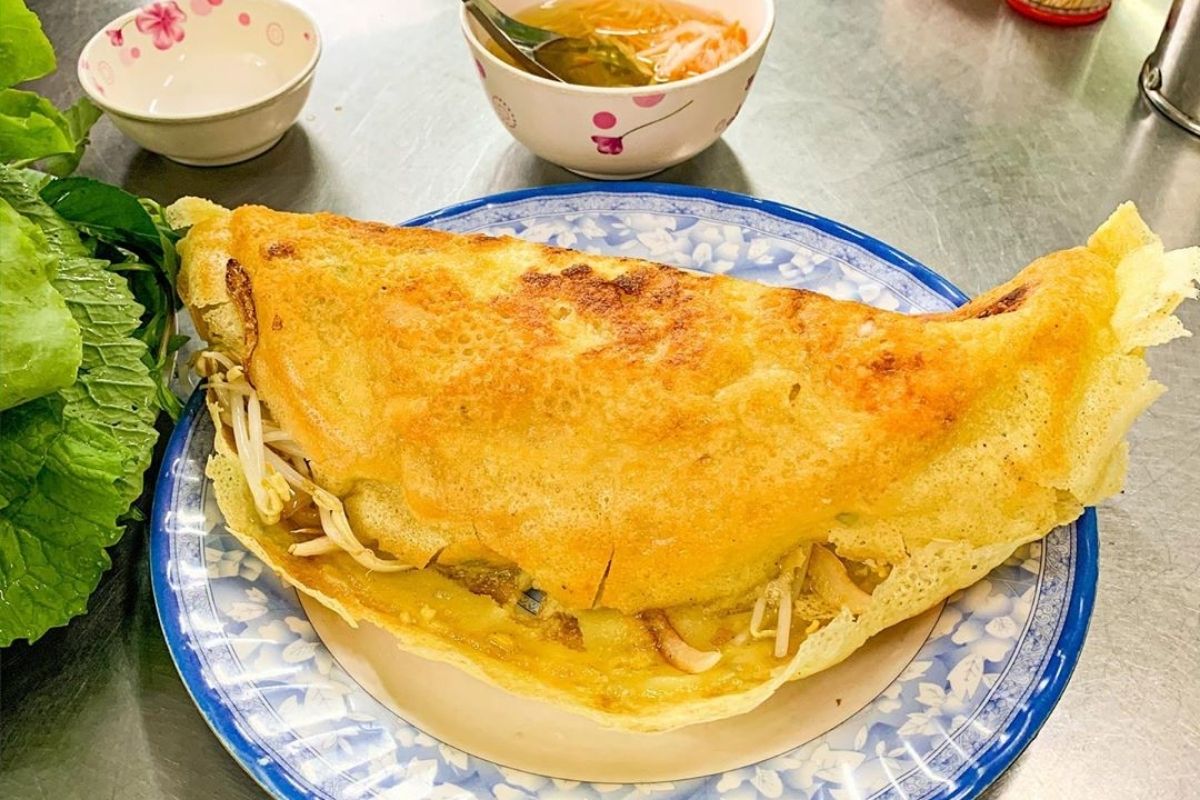
Banh Xeo 46A Dinh Cong Trang (Source: blueshoe)
3. Lau Mam (Fermented Fish Hotpot)
Description: Lau mam is a rich, unapologetic Mekong Delta soul food hotpot. The fish paste is fermented (typically linh fish or sac fish), cooked in simmered pork bones, and coconut water. It’s loaded with catfish, shrimp, squid, eggplant, okra, banana blossoms, and so on.
Region of Origin: Can Tho and An Giang
Key Ingredients: Fermented fish, pork bones, coconut water, river fish, seafood, local vegetables
Where to Eat:
- Lau Mam Da Ly – 89 3/2 Street, Ninh Kieu District, Can Tho
- Lau Mam 44 – 76 Hoang Sa, District 3, Ho Chi Minh City
- Hieu Mien Restaurant – 5D Le Lai, Long Xuyen, An Giang
Cultural Note: Reunion food during reunion meals, as well as Tet, lau mam, is very deeply embedded in Southern Vietnam food culture, especially flood season and Khmer-Vietnamese communities.
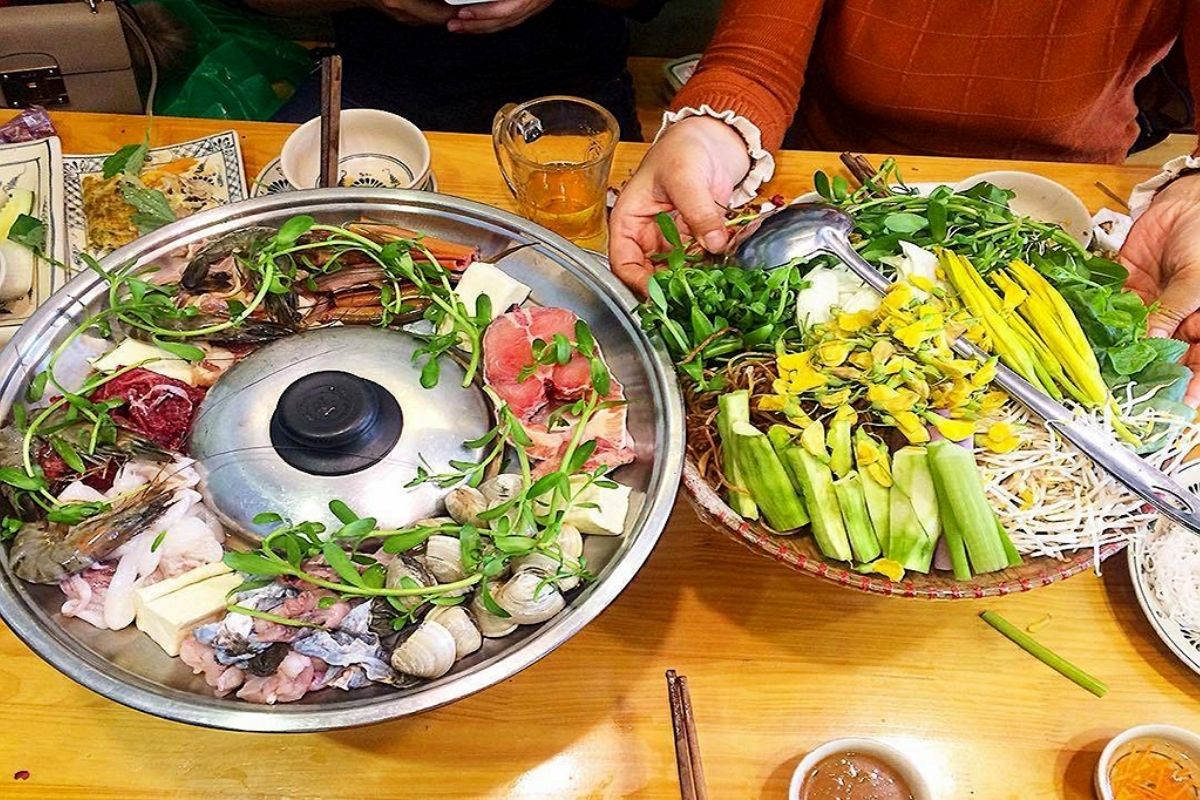
Lau Mam Da Ly (Source: canthotourism)
4. Goi Ca Trich (Raw Herring Salad)
Description: Goi ca trich is Phu Quoc Island’s specialty seafood salad, valued for freshness and balance. Raw herring is shredded thinly and marinated in lime juice, mixed with grated coconut, onions, and herbs, and rolled up in rice paper with vegetables and then coated in generous, peanut-scented fish sauce.
Region of Origin: Phu Quoc, Kien Giang Province
Key Ingredients: Raw herring, coconut, herbs, onions, fish sauce, chili, rice paper
Where to Eat:
- Trung Duong Marina Restaurant – 136 30/4 Street, Duong Dong, Phu Quoc
- Ra Khoi Seafood Restaurant – Vo Thi Sau, Duong Dong Town, Phu Quoc
- Dinh Cau Night Market – Downtown Duong Dong
Cultural Note: The locals claim, “If you haven’t tasted goi ca trich, you haven’t tasted Phu Quoc." It’s a pride of Southern Vietnam Food, capturing the island’s love with the ocean and its vibrant food character.
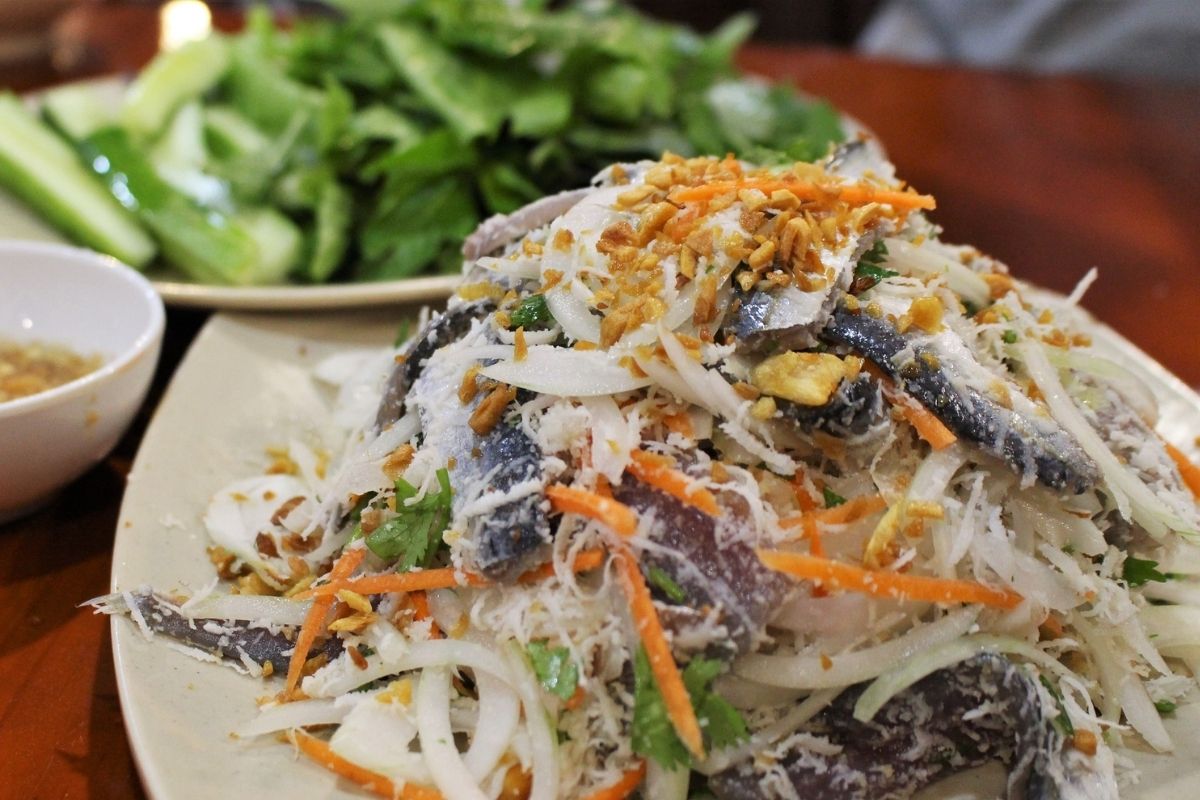
Goi Ca Trich at Ra Khoi Seafood Restaurant (Source: vnexpress)
5. Bo To Tay Ninh (Young Grilled Beef)
Description: BBQ lovers will adore bo to Tay Ninh. Young beef, which is highly valued for its tenderness and sweetness, is used for this recipe and grilled over blazing charcoal. The beef is lightly marinated to add to its natural juiciness and normally served with rice paper, herbs, and fermented anchovy sauce.
Region of Origin: Tay Ninh Province
Key Ingredients: Rice paper, young beef, herbs, fermented anchovy sauce, chili, garlic
Where to Eat:
- Bo To Nam Sanh – National Road 22B, Tay Ninh City
- Lau Bo To Tay Ninh Ut Cuong – Hoang Hoa Tham, Go Vap, Ho Chi Minh City
- Quan Bo To Tay Ninh 5 Sanh – Binh Tan District, Ho Chi Minh City
Cultural Note: Bo to is a testament to the grilling culture of Southern Vietnamese Food – simple methods, clean flavors, and communal eating. It is particularly well-liked on weekends and food in Tet Southern Vietnam, when family members meet for celebratory meals.
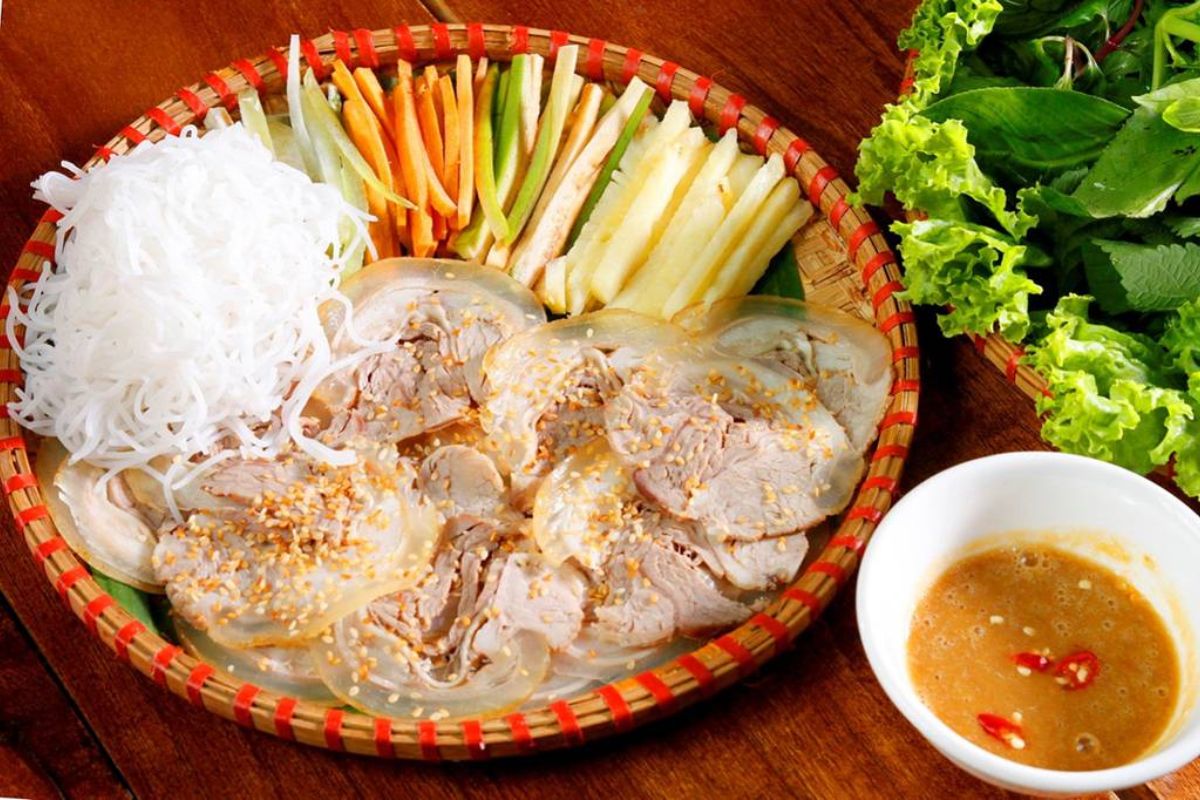
Bo To Nam Sanh (Sours: canthotourism)
6. Hu Tieu Sa Dec (Clear Noodle Soup with Pork and Shrimp)
Description: Hu tieu Sa Dec, from the center of Dong Thap province, is a Southern Vietnamese noodle art of Vietnamese cuisine. Soft and chewy rice noodles in a sweet, clear pork bone broth. Sliced pork, liver, shrimp, and fried garlic are common among the toppings.
Region of Origin: Sa Decc City, Dong Thap
Key Ingredients: Rice noodles, pork bones, shrimp, liver, chives, garlic, pork fat
Where to Eat:
- Hu Tieu Ba Sam – 188 Tran Hung Dao, Sa Dec
- Hu Tieu My Ngoc Nam Vang – 150 Hung Vuong Boulevard, Sa Dec
- Hu Tieu Phu Thanh – 75 Tran Hung Dao, Sa Dec
Cultural Note: The locals eat hu tieu in the early morning or late evening. It’s a perfect testament to how Southern Vietnam Food synthesizes lightness, freshness, and complexity – ideal for new visitors.
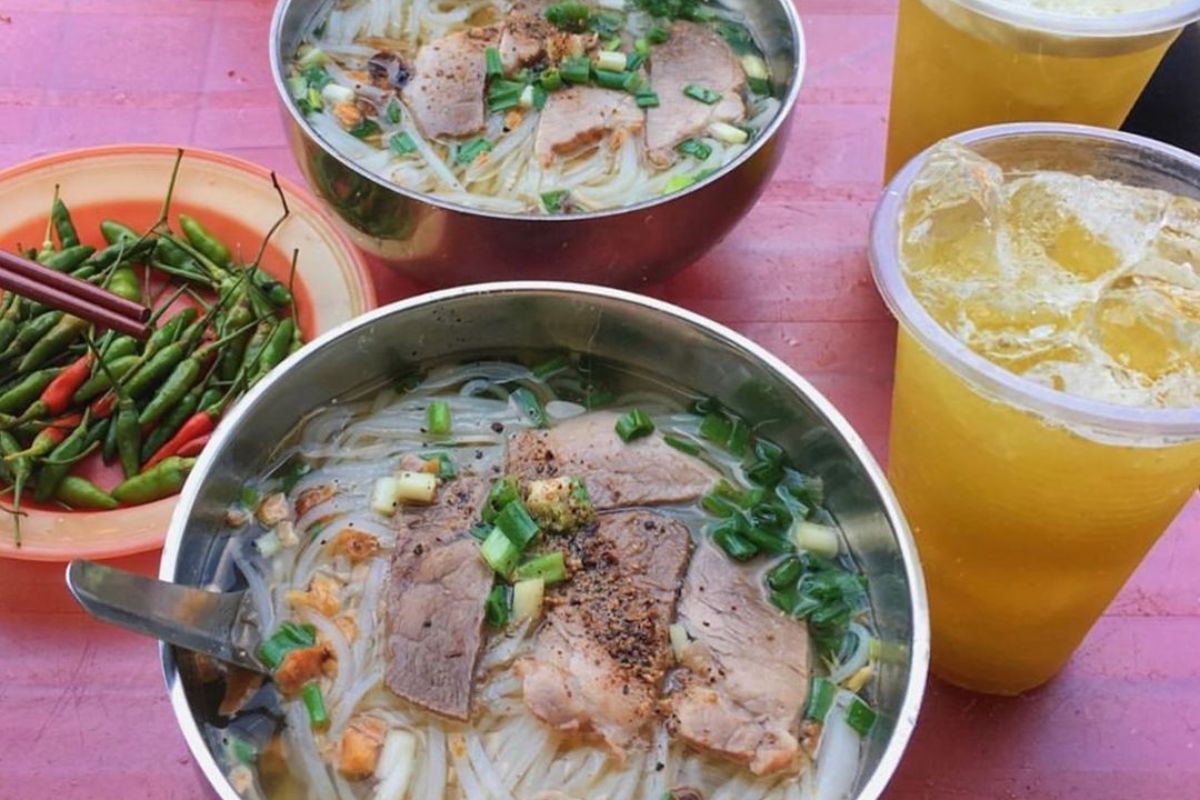
Hu Tieu Ba Sam (Source: mytour)
7. Banh Canh Trang Bang (Thick Tapioca Noodle Soup)
Description: Originating from Trang Bang township of Tay Ninh, thick noodle soup is made of tapioca noodles handmade and served with a thin pork bone and daikon soup. Served normally with boiled pork, chili fish sauce, and an overflowing basket of fresh forest herbs native to the region.
Region of Origin: Trang Bang, Tay Ninh
Key Ingredients: Daikon broth, herbs, fish sauce, pork leg, tapioca noodles
Where to Eat:
- Banh Canh Hoang Minh – Trang Bang Town
- Banh Canh Nhu Lan – Highway 22B, Tay Ninh
- Banh Canh Trang Bang Quan Moc – Cong Hoa Street, Tan Binh, Ho Chi Minh City
Cultural Note: A heal-all dish in local belief and often served to welcome guests in. At food in Tet Southern Vietnam, it’s a comforting way of warming holiday cheer.
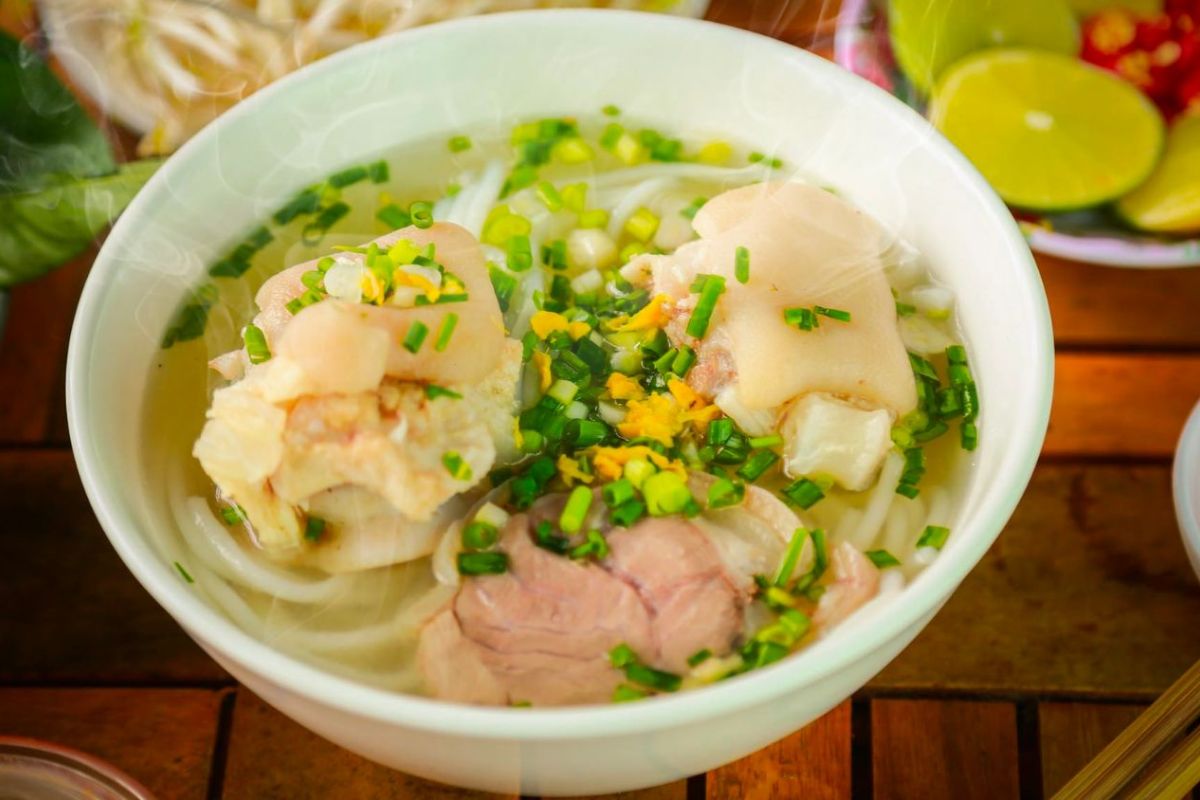
Banh Canh Trang Bang at Hoang Minh (Source: mia)
8. Bun Ken (Fish & Coconut Noodle Soup)
Description: A lesser-known delight of Phu Quoc Island, bun ken consists of a spicy rice noodle bowl topped with minced fish simmered in lemongrass, garlic, and coconut milk. The dish is completed with herbs, pickled papaya, chili, and a sweet-savory broth ladled over the top.
Region of Origin: Phu Quoc, Kien Giang
Key Ingredients: Snakehead fish, lemongrass, coconut milk, turmeric, herbs, rice noodles
Where to Eat:
- Bun Ken Ut Luom – 87 30/4 Street, Duong Dong, Phu Quoc
- Duong Dong Morning Market – Phu Quoc Center
- Ra Khoi Restaurant – Vo Thi Sau, Phu Quoc
Cultural Note: This dish showcases the unique coastal influence of Southern Vietnamese food, combining island greens, sea fish, and rich broth – a combination only possible in Phu Quoc.
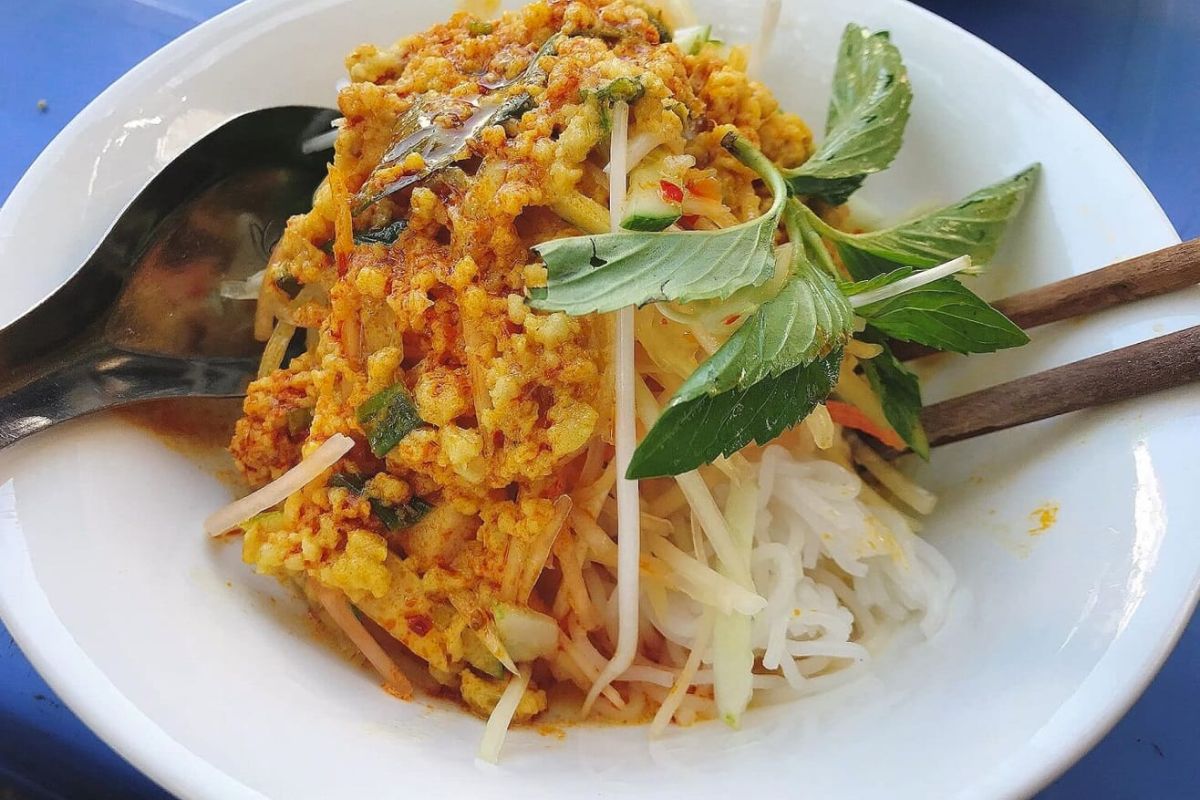
Bun Ken Ut Luom (Source: casinocorona)
9. Chuot Dong Nuong Lu (Clay Oven Grilled Field Rat)
Description: Correct! Clay-grilled field rat is a rural specialty of Dong Thap, but especially in harvest time, when rice-fed field rats are hunted and cleaned. Meat is marinated, threaded, and grilled in a clay pot over firewood, producing crispy skin and juicy, clean meat that surprises first-time tasters.
Region of Origin: Dong Thap Province
Key Ingredients: Field rat (rice-fed), lemongrass, garlic, chili, salt, clay pot
Where to Eat:
- Phong Lan Restaurant – QL30, My Phu Ward, Cao Lanh
- Tam Thanh Restaurant – Nguyen Tat Thanh Street, Sa Dec
- Tu Hao Restaurant – 17 Dien Bien Phu, Cao Lanh
Cultural Note: Terrible as it sounds, this dish is fresh, protein-rich, and grounded in Southern Vietnam food culture, specifically in rural farming communities.
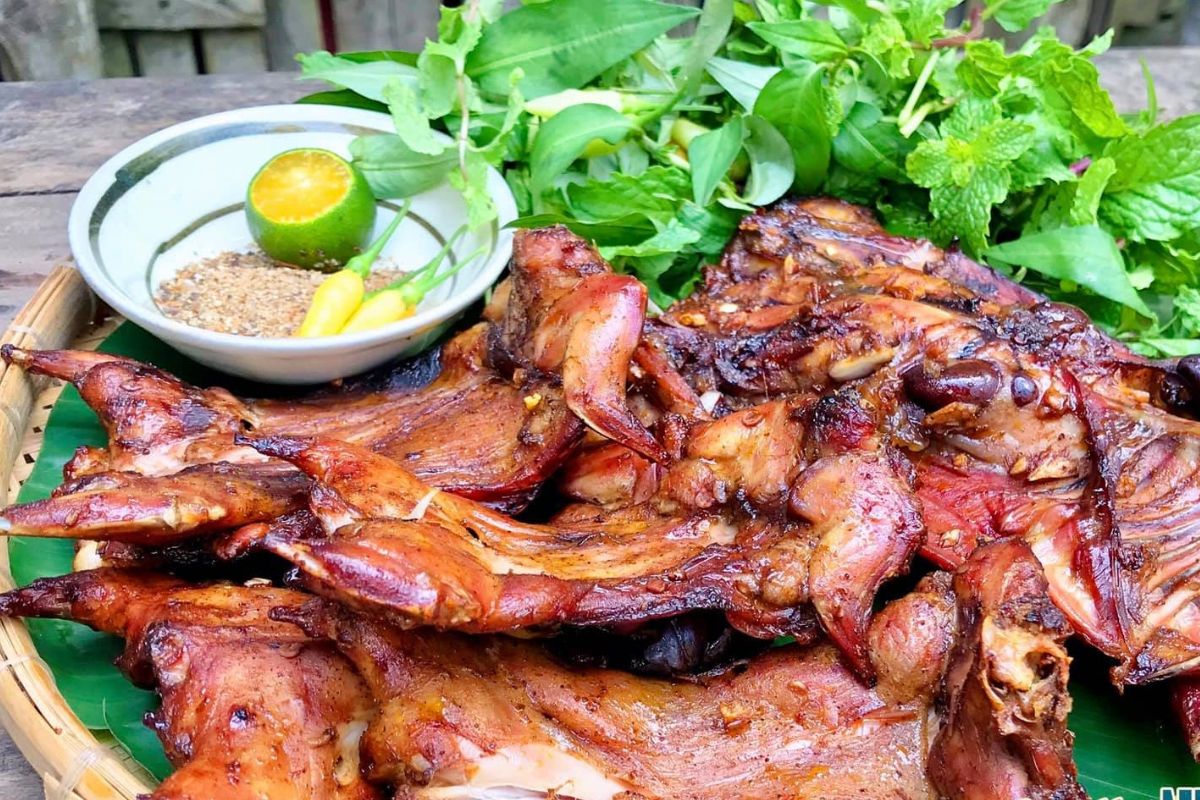
Chuot Dong Nuong Lu at Tu Hao Restaurant (Source: vietnamnet)
10. Duong Dua (Sago Worms in Fish Sauce)
Description: Prepared for an authentic adventure in Southern Vietnamese Food? Say hello to duong dua, a daring dish located deep within coconut trunks in Ben Tre. These white fat worms live off coconut marrow and are a valuable source of protein. Locals eat them raw in chili fish sauce or fry them until crispy and golden.
Region of Origin: Ben Tre Province
Key Ingredients: Sago worms, fish sauce, chili, lemongrass, oil (for frying)
Where to Eat:
- Ben Tre Specialty Restaurant – QL60, Ben Tre City
- Southern Garden Cuisine – Rural food stalls near coconut orchards
- Western Restaurant – District 8, Ho Chi Minh City
Cultural Note: In its role as a super-delicacy, duong dua shows off the daredevil nature of Southern Vietnam food culture. Served normally at local celebrations, it’s something daring travelers enjoy boasting about in the years to come.
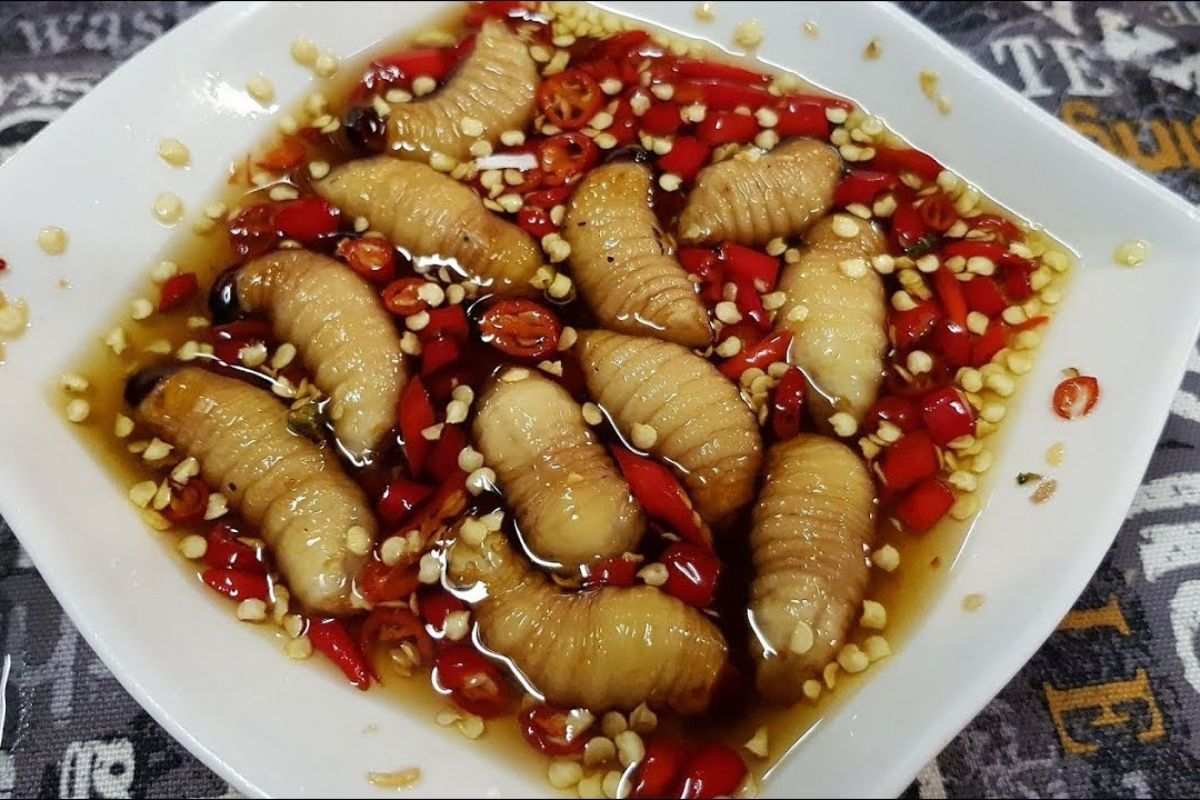
Duong Dua at Western Restaurant (Source: ivivu)
11. Banh Cong (Deep-Fried Shrimp Cake)
Description: Small fried banh cong have a whole shrimp on top and are made from rice flour, mung beans, ground pork, and a whole shrimp standing on top. Fried within a metal frame, the exterior is crunchy, and the interior is thick. The fresh greens and sweet fish sauce offered as an accompaniment complement a perfect mix of textures and flavors.
Region of Origin: Can Tho
Key Ingredients: Rice flour, shrimp, pork, mung beans, herbs, pickles, fish sauce
Where to Eat:
- Banh Cong Thanh Van – 132/8A Tran Hung Dao, Ninh Kieu, Can Tho
- Banh Cong Co Ut – Tran Phu, Can Tho Old Market
- Cai Rang Floating Market – Morning stalls on the river
Cultural Note: A regional pride street food, banh cong is a testament to the way that Southern Vietnam food turns plain ingredients into something tasty. It’s especially enjoyed at casual family reunions and local street food parties.
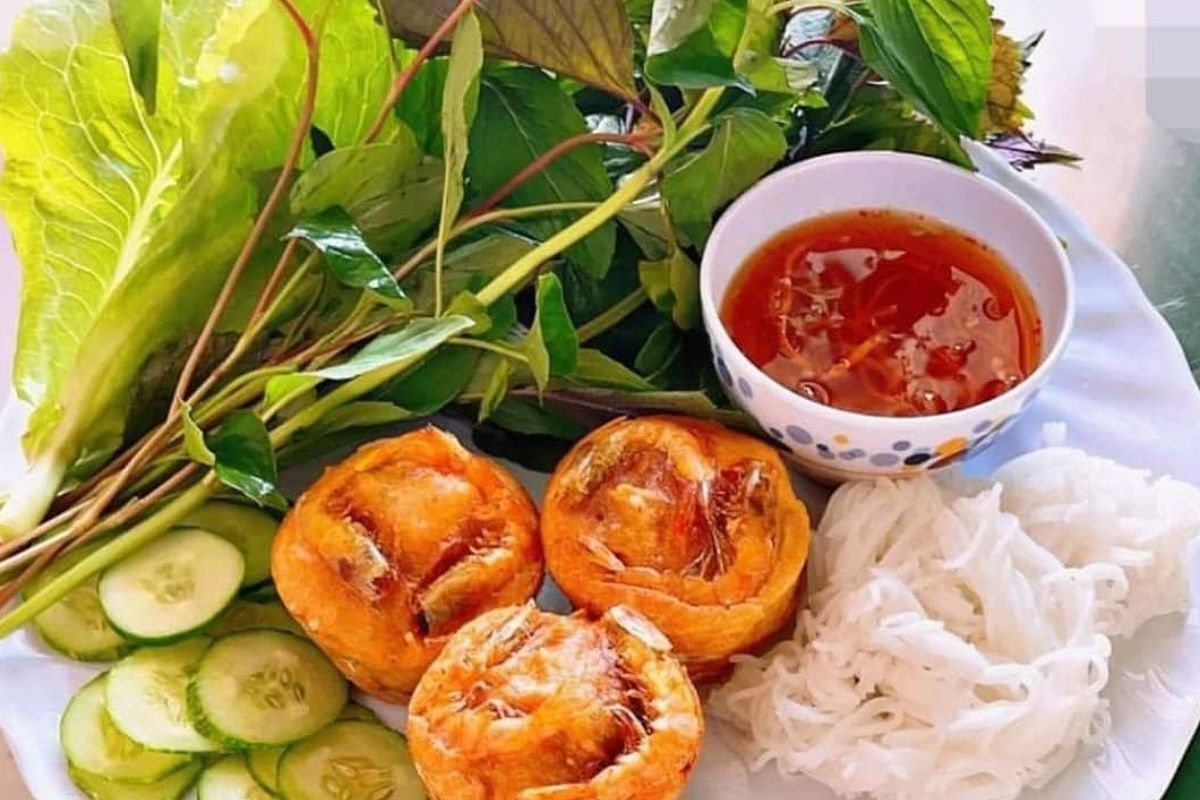
Banh Cong Co Ut (Source: vnexpress)
12. Banh Duc La Dua (Pandan Sticky Rice Cake)
Description: Looking for something sweet during your Southern Vietnam Food tour? Banh duc la dua is a jade-colored dessert made of rice flour, pandan leaves, and coconut milk. The dessert’s chewy consistency and mild sweetness make it a nostalgic dessert, traditionally served with sesame or roasted peanuts.
Region of Origin: Can Tho and Mekong Delta
Key Ingredients: Rice flour, pandan juice, coconut milk, sesame seeds, sugar
Where to Eat:
- An Cu Market – Can Tho City
- Phong Dien Riverside Market – Mekong Delta food stalls
- Local dessert shops in District 5, Ho Chi Minh City
Cultural Note: This cake is linked to childhood, local festivals, and often placed on Tet dessert trays, so it is a soft but rich part of Southern Vietnam food culture.
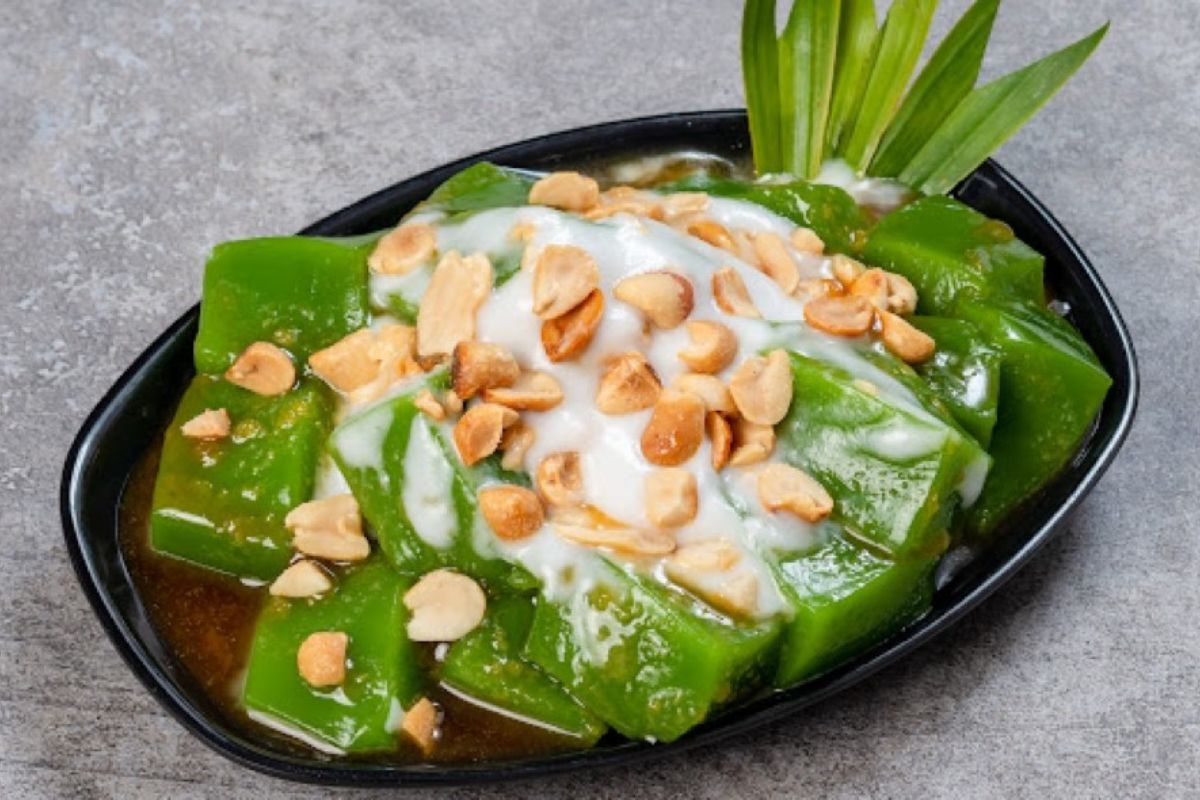
Banh Duc La Dua at An Cu Market (Source: laodong)
13. Ga Ray Phu Quoc (Free-Range Hill Chicken)
Description: Bin industrial chicken, ga ray from Phu Quoc is the real thing. Free-range chickens that hop around island hills and possess firm, flavorful flesh. Locals barbecue them over charcoal or poach them simply with lemongrass and salt, allowing their taste to prevail.
Region of Origin: Phu Quoc Island
Key Ingredients: Free-range chicken, salt, lemongrass, pepper leaves, chili dip
Where to Eat:
- Anh Ba Free Range Chicken Restaurant – Suoi Da Hamlet, Phu Quoc
- Free Range Chicken Hotpot at Nho Restaurant – Duong Dong Town
- Dong Que Free-Range Chicken Shop – Cua Lap, Phu Quoc
Cultural Note: This dish is a symbol of the rural lifestyle of Southern Vietnam, simple, unpretentious, and with a strong character. It is a popular dish among beach picnics and even party food in Tet Southern Vietnam, with the locals.
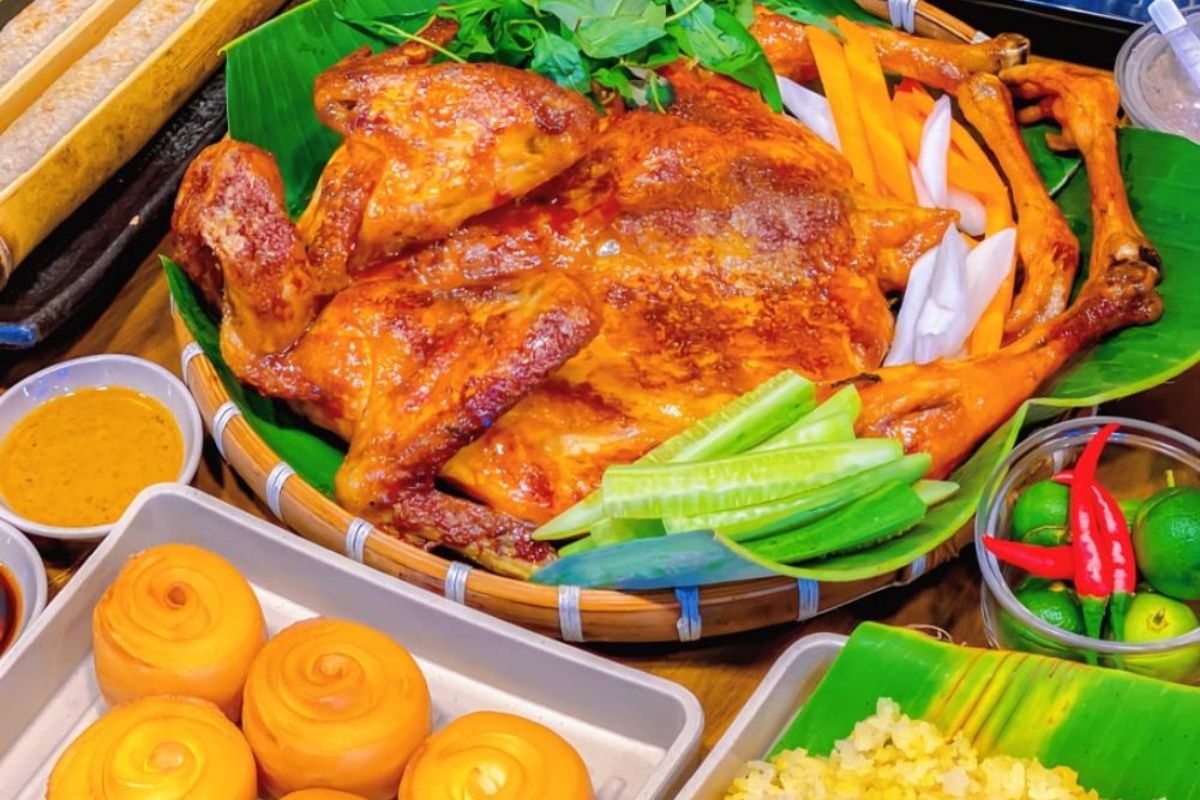
Dong Que Free-Range Chicken Shop (Source: xanhsm)
14. Banh Pia (Durian Mooncake from Soc Trang)
Description: Rich, bold, and fragrant – banh pia is the pride of SocTang. The layered pastry has durian, mung bean paste, and salted egg yolk that form a strong savory dessert usually served as a holiday gift.
Region of Origin: SocTrang Province
Key Ingredients: Durian, mung beans, salted eggs, flour, sugar
Where to Eat:
- Tan Hue Vien Bakery – 127 Nguyen Dinh Chieu, Soc Trang
- Tan Hung Loi – 122 Ly Thuong Kiet, Soc Trang
- Pia Shops in Chau Thanh District – Soc Trang Province
Cultural Note: A must-have item during Mid-Autumn Festival and Tet, banh pia reflects how Southern Vietnam food represents flavor and remembrance. Its unique taste produces a “love it or leave it" appeal for travelers.
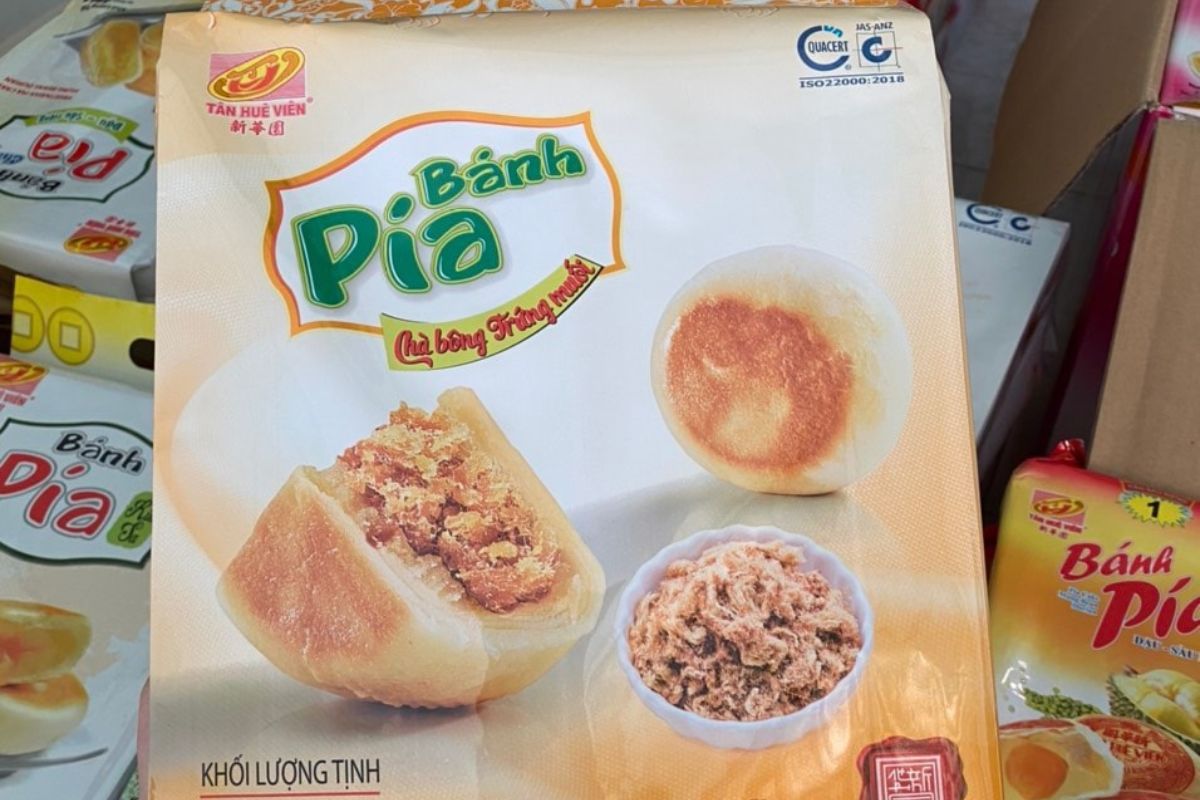
Banh Pia at Tan Hue Vien Bakery (Source: XưởngTânHuêViên)
15. Nhum Bien (Sea Urchin from Phu Quoc)
Description: Bottom but never last: nhum bien, or sea urchin, is butter for the sea. Sea urchin appears on Phu Quoc coral reefs and is usually eaten raw with lime, or barbecued with scallion oil and peanuts. It tastes sweet, creamy, and brinily – bites of the sea.
Region of Origin: Phu Quoc Island
Key Ingredients: Sea urchin roe, lime juice, scallion oil, roasted peanuts
Where to Eat:
- Offshore Seafood – Vo Thi Sau, Duong Dong, Phu Quoc
- Dinh Cau Night Market – Night market stalls
- Ham Ninh Fishing Village – Local seafood restaurants on the beach
Cultural Note: This rich indulgence is a hidden jewel of Southern Vietnam Food, typically served at special seafood dinner events or to impress guest diners.
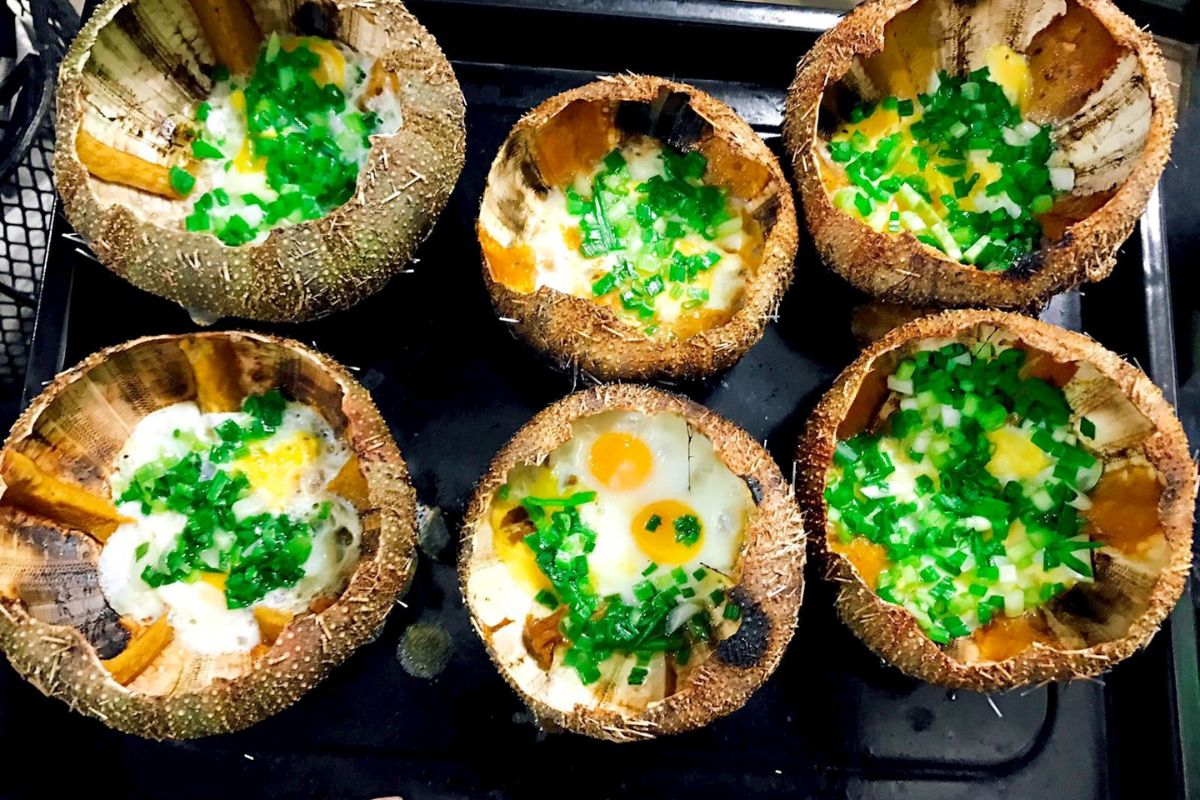
Nhum Bien at Offshore Seafood (Source: hoabinhphuquoc)
Southern Vietnam Food During Tet: Unique Traditions
What’s Cooking During Tet?
In every household across Southern Vietnam, kitchens come alive days before Tet. Families gather to prepare large trays of food, both to enjoy at home and to offer to ancestors. These meals aren’t casual, they’re thoughtfully chosen to convey blessings and tradition.
Key Dishes You’ll Find on Tet Tables
- Banh Tet: The mythical sticky rice log wrapped in banana leaves. Inside is glutinous rice filled with mung beans and pork belly, steamed for hours until fragrant. The cylindrical form represents harmony and also the cycle of the moon, perfect for a new beginning.
- Thit Kho Tau: Braised caramelized pork belly and boiled eggs in coconut juice. Shiny golden, dissolve-in-the-mouth, this is so typically symbolic of family harmony and material success.
- Canh Kho Qua: Or “bitter melon soup." Yes, bitter! But it’s eaten with hope that what adversity of the last year will be left behind in favor of coming luck and sweetness. It’s purging and comforting.
How Tet Meals Differ From Everyday Fare
In contrast to daily food focuses on functionality, food in Tet Southern Vietnam is ceremonial, abundant, and eaten over several days. Foods are selected about their symbolic qualities, flavors are more intense, and portion sizes are generous. The family eats frequently with extended family, neighbors, and guests, a sign of sharing and generosity.
Where to Experience Authentic Tet Dishes
If you’re visiting during Lunar New Year, don’t miss these immersion experiences:
- Mekong Delta Homestays (like Cai Be or Vinh Long): Share meals with local families, assisting in preparing traditional Tet dishes from scratch.
- Ho Chi Minh City Food Tours: Go to Tet food fairs like Ben Thanh Market or Cho Lon Market, where you may sample banh tet, pickled vegetables, and candied fruit.
- Impress Travel Southern Vietnam Tet Tour: A unique trip that takes you to the center of celebration kitchens and ancestral traditions.
Tips for Travelers Exploring Southern Vietnam Cuisine
Ordering Made Simple
At small restaurants or food stalls, you can just point at the dish or ask for the name. Don’t panic if you don’t know Vietnamese – locals are welcoming and love sharing food. Most restaurants also have a simple menu with pictures on offer.
Know Your Plate
Southern Vietnam food culture uses a lot of fresh herbs and dipping sauce. Your meal will come with mint, lettuce, or basil – wrap them around your meal or dip them in fish sauce for the best flavor. The portions are small, so you can try lots of dishes in one sitting!
Spice & Allergies
Not fond of spicy food? Say “Khong cay" (no spice). Peanuts or seafood allergenic? It’s better to flash a note or get someone to write it out for you, especially when trying food in Tet Southern Vietnam, such as lau mam or goi ca trich.
Eating Etiquette & Local Sayings
Use chopsticks carefully and don’t stand them up in a rice bowl – that’s for funerals. Smile, say “Xin chao" to greet, and say “Cam on" to thank. And if the food is amazing (which it will be), say: “Ngon qua!" – That is: So delicious!
Conclusion
From street-side bites to festive Tet feasts, Southern Vietnam Food captures the warmth, spirit, and identity of the South. Each dish reflects generations of tradition, shared memories, and local pride.
So don’t just visit, taste your way through the region. Join a culinary tour with Impress Travel and let every meal become a story you’ll carry long after your trip ends. That’s Southern Vietnam at its most delicious.







